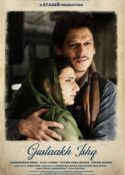 In Satish Kaushik’s Badhai Ho Badhai, which was released on June 14, 2002, Anil Kapoor bulked up to play an overweight man, the reference point being Adnan Sami from his pre-weight-loss phase.
In Satish Kaushik’s Badhai Ho Badhai, which was released on June 14, 2002, Anil Kapoor bulked up to play an overweight man, the reference point being Adnan Sami from his pre-weight-loss phase.
But not to worry, it was all prosthetics. There’s a thin Anil Kapoor and a fat Anil Kapoor, and the twain do meet in Satish Kaushik’s split-level comedy about love, sunshine, and music—not necessarily of a very melodious kind.
Most of Kaushik’s directorial ventures have been faithful adaptations of Tamil-Telugu blockbusters. Badhaai Ho Badhaai is no exception. It adheres to the original Tamil Poove Unakkaga in most vital and not-so-vital details, and emerges with a frothy fun fare that tries to make a statement on two critical social issues: communalism and obesity. There’s a tragic mix-up of issues. Kaushik’s statements on Hindu-Christian amity suffer from obesity.
Fortunately, the episode about an overweight Raja losing his girth for love is bracing and absorbing. The ‘normal’ and overweight Anil Kapoor create a reversed before-and-after effect across the intermission line. In the first- half Raja arrives in a crowded middleclass neighbourhood (recreated with a superb eye for nuanced detail by cinematographer Rajeev Jain and art director Sharmishta Roy) to cement the fissures and stopper the ooze of hatred between two adjacent families , the Chaddas and the d’Souzas who, we are told in swift spurts of flashbacks , began to hate one another when their progenies eloped and got married.
Not very original neither elevated by its cinematic treatment, the theme seems a pretext to give its leading man yet another chance to do a narcissistic dance. The idea of an incorrigible do-gooder bringing peace in the domestic universe is as familiar to mainstream Hindi cinema as Rajesh Khanna, Anil Kapoor, and Hrithik Roshan. All three stars have played the domestic saviour in one or more films. In Badhaai Ho Badhaai Kapoor overdoes the sugary sensation.
Fat or thin, Anil Kapoor as Raja is in almost every frame of the film, determined to spread the full-cream milk of human kindness even when Amrish Puri’s surly son Govind Namdeo sprinkles poison in Raj’s laddoo and filmmaker-turned-actor K. Vishwanath’s son Anang Desai throws away Raja’s cake in the bush. Maybe they both suffer from diabetes.
For a long while, Kaushik’s narrative functions as a relay race. To make sure nobody feels left out, Raja does everything in twos. If the matriarch from the Chaddha family (Farida Jalal) gets a smile , so does the one in the d’Souza family (Rohini Rattangadi). After a while, we begin to feel we’re watching a well-orchestrated propaganda film on communal harmony with every component arranged mathematically rather than credibly or logically.
The second half, where we go into a flashback with a fat Anil Kapoor, has some wonderful moments . The growing bond between the obese Raja and the screechy feather-brained unfocussed Florence (Keerthi Reddy) secretes a tender belly, so much so that we begin to wonder if the director’s own battle with the bulge inspired this section of the narrative.
Though as the dogooder he isn’t able to do anything he hasn’t done before, Anil Kapoor plays the fat man with padded compassion. In his scenes of romantic dejection, the actor returns to his two old favourites Raj Kapoor and Kamal Haasan (the latter in Ramesh Sippy’s Saagar) to play the Chaplinesque loser with podgy poignancy. The ‘fat’ portions of the narrative are the film’s highlight.
As for the rest, Kaushik’s swings chuckles at the two warring clans’ expense. Some of these evoke laughter. But most of the laughter gets drowned in the careening crowd of characters indulging in unrestrained comedy and melodrama. Like all of Kaushik’s remakes, this one too suffers from congenital crowdedness. The Snappy Family Reunion is like Sooraj Barjatya’s Happy Family gone awry. Characters spill out of every nook and cranny like insects crawling out of rather well-polished wordwork.
The neighbourhood, though well conceived, is infested with overdone oddballs. Among these, only Kader Khan shines as a screechy classical singer who has the whole neighbourhood running for cover. Some songs, especially ‘Raag banke’, done in the neo-classical style of Girish Karnad’s Utsav, have been imaginatively filmed against some truly picturesque backdrops.
In fact, the film’s biggest USP is its wonderfully liberated visual aesthetics. Kaushik avoids studio sets as far as possible to take us into an outdoor freedom denied to most mainstream Hindi films. But he messes up an otherwise cute and innocuous entertainer with a monstrously over-the-top climax where the two warring families run with guns to a lonely spots for a desi equivalent of a duel under the sun. Tact and subtlety aren’t the highlights of this film.
Though the film is about a Hindu and Christian family at war, Anil Kapoor’s climactic speech seems to be targeted more at the Hindu-Muslim tensions in the country. The violence in the country may end one day. But the rabble-rousing rhetorics seem to go on forever.
The vastly gifted supporting cast plays its cliched parts with stereotypical proficiency. Among the two leading ladies, after two consecutive flops in Hindi, Keerti Reddy, the obviously self-seeking Christian girl, proves to be third-time lucky. Like Sonali Bhendre in Satish Kaushik’s Hamara Dil Aapke Paas Hai, Keerti has been dressed and projected very well.
Shilpa Shetty as a loud, aggressive Punjabi woman masquerading as Anil Kapoor’s wife is a nightmarish synthesis of Kajol in Kabhi Khushi Kabhie Gham and Sridevi in all her best films. In fact, when someone compares her dancing to Madhuri Dixit, Shetty shakes her head. “No, I ‘m a big fan of Sridevi.”
Anil Kapoor is obviously a big fan of Charlie Chaplin, Raj Kapoor, and Kamal Haasan. He tries to impart the same pathos in his part of the self-effacing do-gooder. But the product doesn’t go beyond a nodding homage to the enterprising spirit.









